The Many Lives Along the Nestos River
What do kiwis have to do...

In the forests of Grevena
© Clairy Moustafellou
Boletus, Chanterelles, Amanita Caesarea, Hydnum, Lycoperdon utriforme… These are just some of the words you will hear from a mountain guide, a grandmother, or even a child; in Grevena they are all scientists. But for now it is Lefteris Zioutas who points out to us some edible and non-edible types of mushroom as we walk in the multi-colored forests of the Valia Calda valley.
For the past eight years, Zioutas has been working as a nature guide on behalf of the Overland Company, and he is proud of his work. Before, his main job was in construction. Many others here have similar life stories, as ever since a group led by the educator George Konstantinidis started promoting the mushrooms of Grevena 30 years ago, almost everybody has taken an interest in the peculiar fungi and the area’s natural wealth in general.
They have pointed out various edible mushroom types to the elders of the villages, who until then had only collected the two types they recognized. They have created the Greek Mushroom Society, organized seminars to share their knowledge, proclaimed Grevena Greece’s official “mushroom town” working together with the municipality – they have even formed the band Manitarock (Mushroom Rock).
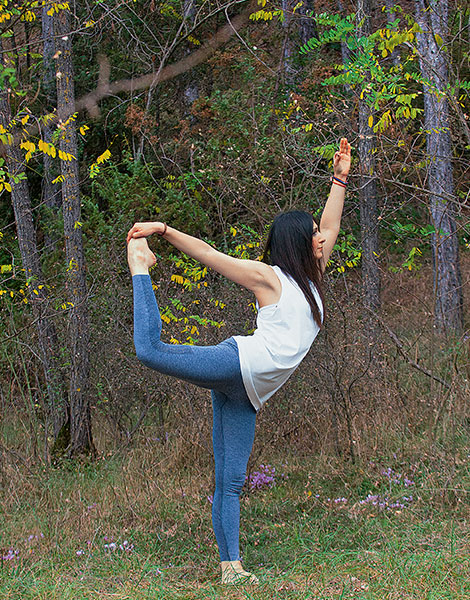
© Clairy Moustafellou
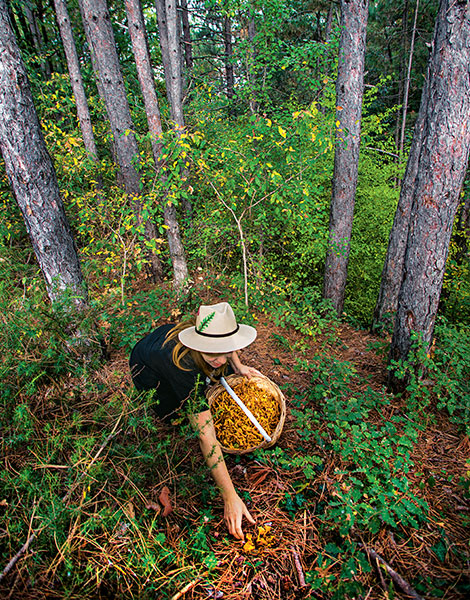
Gathering mushrooms in the forests of Grevena
© Clairy Moustafellou
Here you will find activity companies offering mushroom hunting expeditions in the indescribably rich nature of the area; factories processing mushrooms into oil, soup, desserts and more; tavernas with their own mushroom-based specialties; a mushroom museum; two mushroom sculptures in the town (also called Grevena); several top professional mushroom collectors spending their days in the forests like elves, and even more mushroom aficionados.
“There is not a single house in Grevena that does not have mushrooms, either dried or frozen. The people of Grevena survived the German Occupation and the Greek Civil War because of the mushrooms,” says George Konstantinidis, the President of the Greek Mushroom Society. He explains that the mushrooms are like recycling plants. “The mushroom’s most important service is the decomposition of dead organic matter. It has been calculated that if they were to go extinct the forest would suffocate within 12 years, ” he notes.
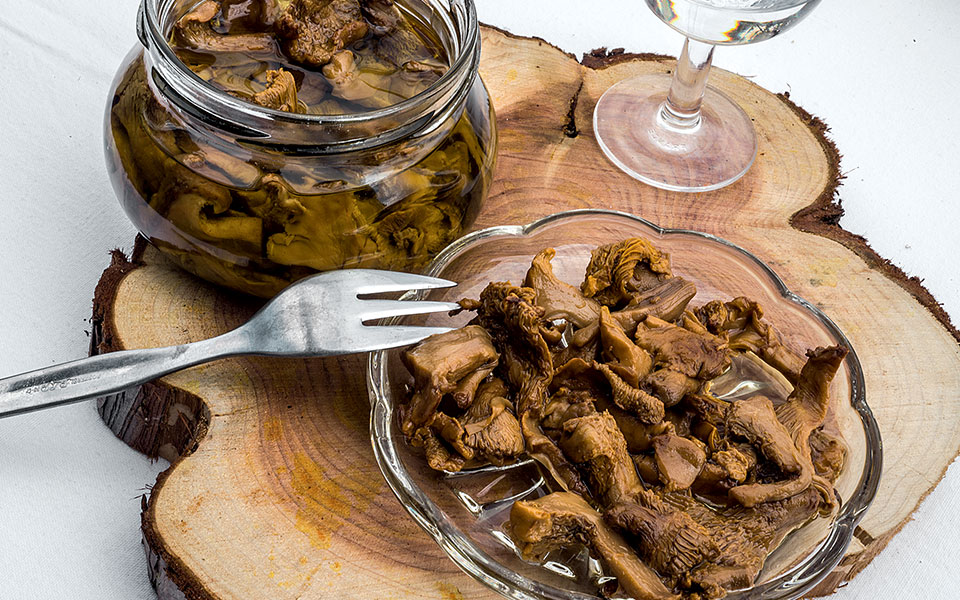
Mushroom lovers will be in heaven in Grevena
© Clairy Moustafellou
Besides their deliciousness and importance, wild mushrooms are a good excuse for long walks in the surrounding nature. “In the past, if you were not a hunter, you had no reason to visit the mountain,” says Andreas Sliaras, owner of the Idigefston mushroom shop in the town of Grevena. He had no prior cooking expertise. He started out by combining his mother’s traditional practices with the knowledge of food technicians. The other shop in town is Manitoproionta Grevenon (Mushroom Products of Grevena), owned by Fotis Paraskevaidis, the vice president of the society and an exemplary cook.
Out of the 7,000 species of mushroom recorded in Greece, Konstantinidis has identified over 2,500 types in the region of Grevena. There are hundreds of edible ones, although only 10 will be served in restaurants or processed into food.
“Those are the ones that you cannot get confused, so it eliminates the chance for poisoning. In order for people to feel safe – don’t forget that we were found to be the third most mushroom-phobic country in Europe, after the UK and Albania – anything new that we find is sent to microbiology laboratories in Europe for analysis,” Sliaras says.
Theodoros Karagiannis, the owner of the Aulais restaurant in Grevena adds, “Grevena deserves to benefit from thematic tourism around mushrooms. The mushroom experience is magical; getting up for a morning walk in the woods with your children looking for mushrooms, finding them, identifying them, collecting them and eventually eating them. You examine the weather conditions, the shady spots, the sunny spots and different elevations. Each habitat has different types of mushrooms. Many look similar to each other, and that makes the process all the more interesting.”
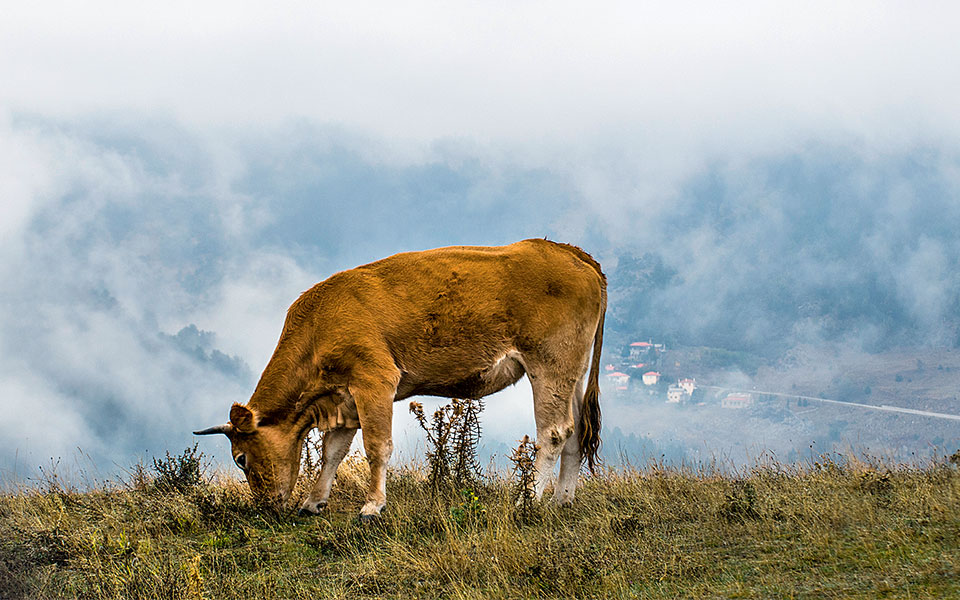
Aside from mushrooms, dairy is another important product in the area.
© Clairy Moustafellou
The autumn and the spring are the best mushroom seasons, as they require humidity and mild temperatures. It is then that mushroom lovers head out into the area’s forests and to Mount Voio which borders the regional unit of Kozani.
“Grandfathers, grandmothers, children, students, teachers, lawyers all collect mushrooms. Everyone was familiar with the porcini, but when I mentioned the [Greek term] vasilomanitara – which is the exact same thing – to a customer, I received a strange look. The funny thing was that during the first years of the restaurant, a lot of young people would come in excited thinking I would serve the magic mushrooms! Of course we do not collect hallucinogenic mushrooms or teach about them in the seminars. We do not need to know about them,” Theodoros Karagiannis emphasizes, who along with Andreas Lambrou – the co-founder of the Mushroom Museum in the village of Lavdas – remember their encounters with animals under the influence of the hallucinogenic fungi.
The museum is small and has replicas and fresh mushrooms that change every week as long as they are bountiful, and volunteers help keep the museum open. However it is the forest walks that are of greatest interest in Grevena, as well as the mushroom festivals with their seminars, tours and cooking classes, the last of which turn into real feasts.
In Grevena during summertime, the Greek mushroom festival takes place – one of the biggest such festivals in Europe; it gathered 12,000 visitors from around the world this past summer.
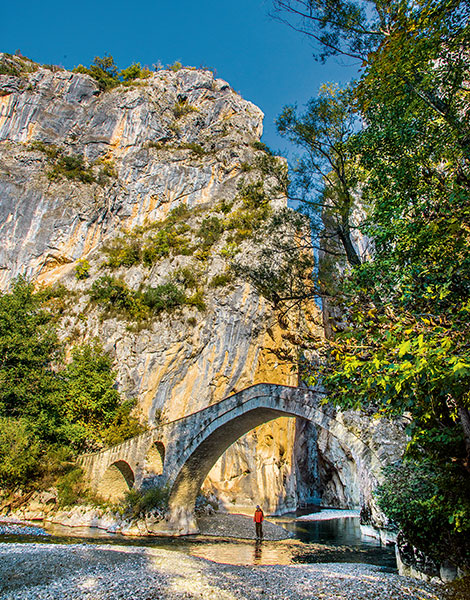
Portitsa Bridge near the village of Spilaio
© Clairy Moustafellou
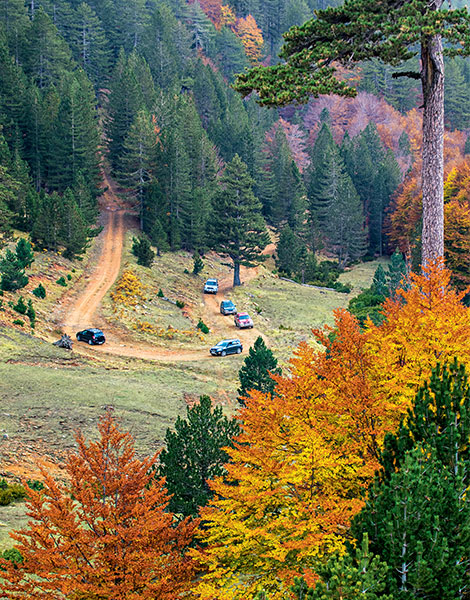
Driving through the Valia Calda nature reserve
© Clairy Moustafellou
Here, whatever is not mushroom-related still has to do with nature and wildlife. At an elevation of 1,400m is the Valia Calda National Park, the core of the Pindus National Park. Valia Calda means “warm valley” in the Vlach language, since it is surrounded by mountains over 2,000m tall. It’s an incredible landscape that dazzles with its colors; it also boasts unique rock formations, the Arkoudorema River, smaller streams, rich forests of black and Bosnian pines, plane and beech trees, rare plants, birds, reptiles, amphibians and mammals, among which are wolves and bears.
The dirt road that leads to the valley begins from the village of Perivoli and it is strictly for 4×4 vehicles. Weather permitting, one can drive across the entire valley and reach the village of Milia in Ioannina. It is best though to visit on foot with an experienced guide. Apostolos Dianellos organizes amazing hikes with the Overland Company, off-road excursions, and survival training classes that include overnight stays in tents.
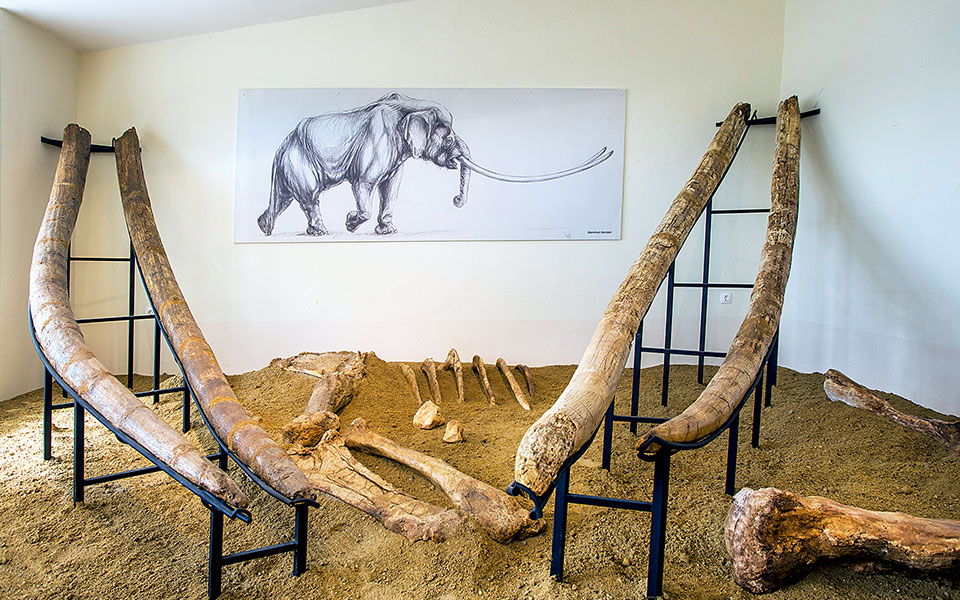
The Natural History Museum in the village of Milia
© Clairy Moustafellou
In his company, you learn that the Bosnian pine at higher elevations survives, even when covered under 10 tonnes of snow, because of the armor-like bark of its trunks. You see poisonous plants, like Digitalis grandiflora and Pinguicula (insect-eating butterworts), newts and poisonous toads. You learn that female bears give birth to their cubs during hibernation, and that the animals mostly eat fruits in contrast to their terrifying image. The bear is the other symbol of Grevena, along with the mushroom; the whole regional unit is filled with stone and wooden bear sculptures, the bright signposts on Egnatia Odos (A2 motorway) warn drivers of their presence, and in the mud you see their footprints – although you are unlikely to catch sight of one.
Grevena has always been rich in nature and wildlife, as paleontological findings confirm. A million years ago, a vast savannah lay here, where prehistoric mastodons (Mammut borsoni), and other giant herbivores with enormous tusks used to live.
Exhibits about the ancient environment, fossilized skeletons of rhinoceroses, saber-toothed tigers, elephants, bears and, of course, mastodon tusks will leave you in awe at the Natural History Museum in the village of Milia.
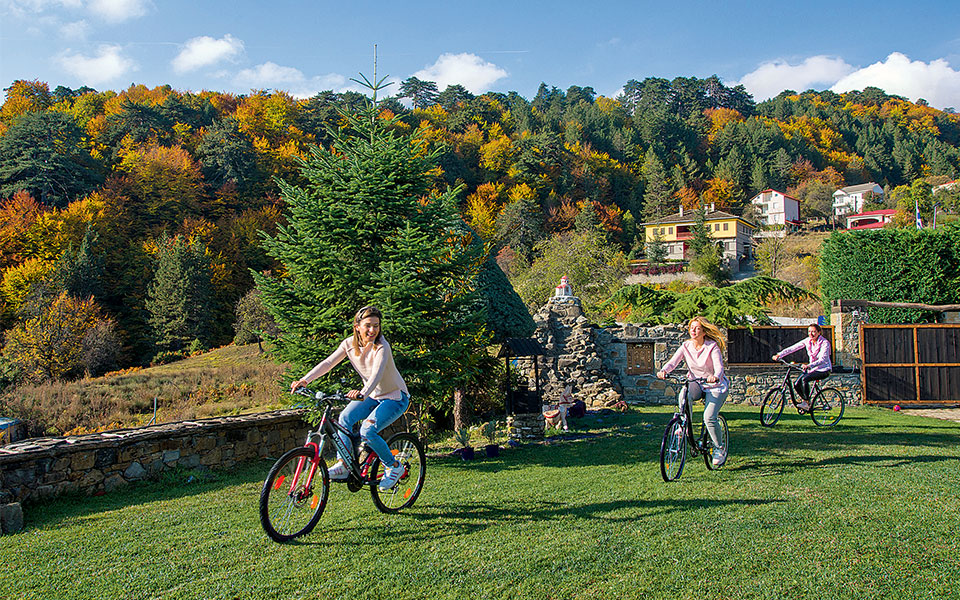
© Clairy Moustafellou
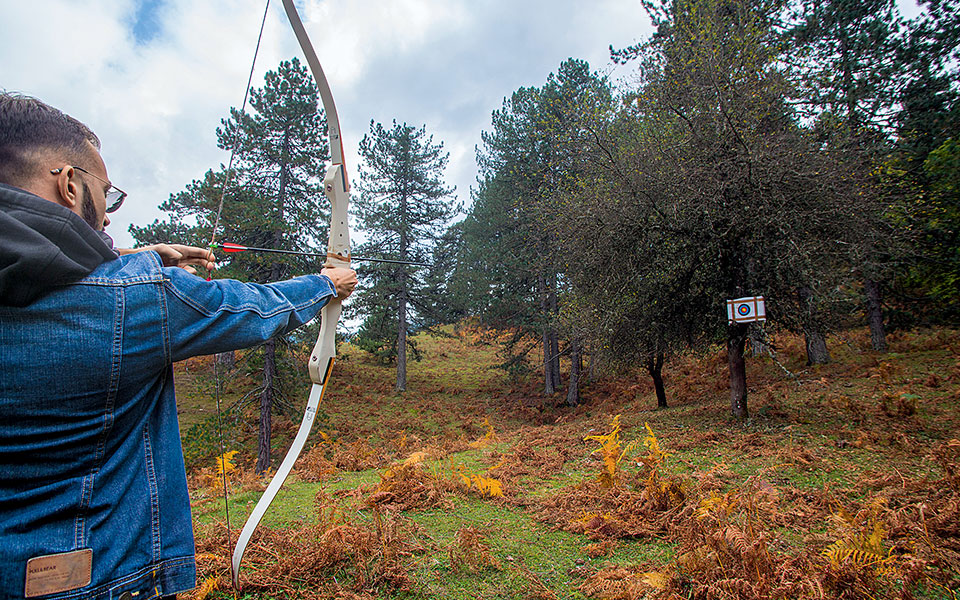
© Clairy Moustafellou
That said, the main economic activity in the wider area is livestock farming. Especially in the mountain Vlach villages, the transhumant practices are kept; during the winter the shepherds descend with their flocks to the Thessalian plain, and the villages are left deserted. In the summer they lead them up again to graze in the highlands.
The “Caution Children Playing” signs at the entrance of the villages look strange given their emptiness in winter, however in summer their populations increase by the hundreds. While tourism growth is limited, the local products are very worthwhile: excellent cheeses (particularly the local Anevato cheese) and other dairy and meat products.
The ski resort area in Vasilitsa – a favorite for snowboarders – also attracts additional visitors.
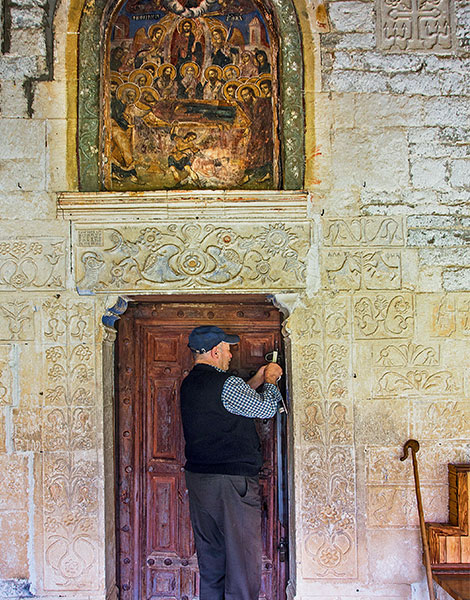
© Clairy Moustafellou
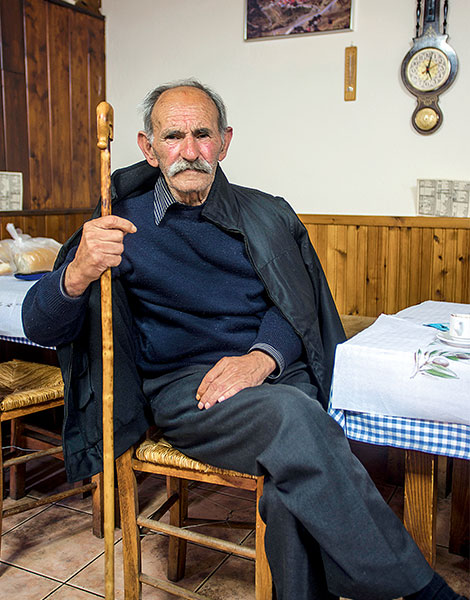
© Clairy Moustafellou
The most enjoyable thing to do in the area is go on excursions in the rich natural environment. Be advised that while the road network is asphalt, it is usually poorly maintained. The distances are long and gas stations can be found only in town.
The more developed villages close to Vasilitsa are the Vlach villages of Smixi and Samarina, located in beautiful spots on the slopes of Mount Smolikas, with tavernas around their vibrant squares, a water mill still working despite its old age, and the impressive 19th century church of Megali Panaghia on which a pine tree has – seemingly miraculously – grown on the roof.
From here, it is worth traveling to the famed Mastorohoria (craftsmen’s villages), bordering the regional unit of Kozani. The villages of Dotsiko and Kalloni are the most beautiful, with their stone houses and bridges, their unique character and their traditional coffeehouses serving meals.
The route towards the villages of Avdella and Perivoli on the edge of Valia Calda is wonderful as well. During winter there are only two or three residents, but in Avdella, onetime home of the Manakia brothers – cinema pioneers in the Balkans – despite its unpleasing sprawl, there is a coffeehouse and the big square is worth a stop.
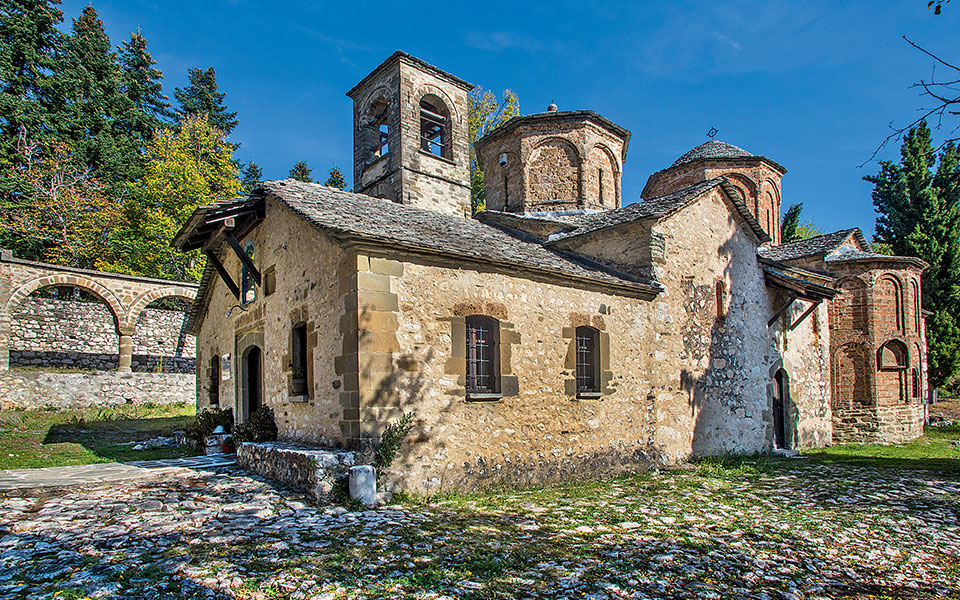
© Clairy Moustafellou
You might spend more time in the village of Spilaio located on the slopes of the awesome Mount Orliakas. The area is always populated, the tavernas are open and the 17th century Monastery of Panaghia is open to visitors. Another highlight is the Portitsa Bridge at an amazing location in the valley of the Venetikos River and by the entrance to a very narrow gorge. Two more gorgeous stone bridges are nearby, the one by the entrance to the village of Ziakas, and the Aziz Aga Bridge in the village of Trikomo.
When the night falls, the tour does not stop. The sounds of nature pervade, the darkness is absolute, and the stars are unusually bright – Mount Orliakas is one of the areas in Greece with the lowest levels of light pollution, and is expected to acquire an observatory.
Drive carefully, for at any given time you may cross paths with deer, wolves, wild boar, or bears. And how many areas of Greece can you say that about?
GETTING THERE:
Starting from Athens, the more relaxed and easiest way to reach Grevena is by driving west along the Olympia, Ionia and Egnatia motorways. (Distance 500km). Toll charges and gas will cost about 190 euros, return. In the same amount of time via the cheaper but trickier provincial roads, you will arrive via the National motorway Athens-Lamia and through Domokos-Karditsa-Trikala (Distance 400km, cost: 130 euro including the return trip).
Starting from Thessaloniki, the distance is 160km via the Egnatia Motorway (A2). The toll charges and gas will run to about 40 euros including the return trip.
ACCOMODATION:
The best choice is the Valia Nostra Escape Hotel (Tel. 24620-80151, rate starting from 90 euro). The hotel is in the village of Smixi. It’s a real refuge where everything is carefully designed for the guest to feel at home, as the owner, Ioannis Leventis, looks after every detail. The rooms have that mountain lodge warmth and are fitted with goose down duvets and plush pillows and equipped with modern comforts. The lofts with the view to the valley stand out. The big sitting room with its large windows and fireplace, the bar and the warm indoor pool/spa overlooking the mountains, exceed every expectation. The breakfast is rich, accented with local products, a large variety of nuts and fruit, authentic mountain teas and other refreshments.
The Amadryades guesthouse in Alatopetra is also a very good choice (Tel. 24620-25034, rates starting from 95 euro) as is the stylish Koukounari Hostel (Tel. 24620-24821, rates starting from 60 euro), located in Smixi.
La Noi Traditional Guesthouse located in Samarina is very family-friendly (Tel.24620-95660, rates starting from 50 euro). The big resorts in the area are now accommodating Syrian refugees.
FOOD
Fine meat, mushrooms and tasty cheeses are served everywhere in Grevena. On weekdays, food at the guesthouses is provided given prior arrangement, at the good Barbamichalis taverna in the village of Samarina (Tel. 24620-95231) and at the Perdika taverna (Tel. 24620-82234) in the village of Spilaio.
On weekends also open are, the Spilaio taverna (Tel.24620-82303) in the village of Spilaio, Theocharis Restaurant (Tel. 24620-85230) in the village of Smixi and the traditional taverna Tsiourgiaka (M. 6932-451104) in the village of Aetia.
In Grevena, the mushroom taverna Aulais (Tel. 24620-25402) is always open, where the chef, Nikos Agnandos, prepares delicious dishes: tagliatelle with mushrooms, and the must: the mushroom platter featuring 7 different types cooked in different ways (sautéed, roasted, grilled, etc).
ADDITIONAL NOTES:
Stay updated about mushroom festivals via the Facebook page of The Greek Mushroom Society
For mushroom-based products: Idigefston (Thermopylon 2, tel. 24620-22880), Mushroom Products of Grevena (K. Taliadouri 16, tel. 24620-80007).
The Mushroom Museum in Lavdas is usually open on weekends, 10.00-14.00.
For organized mushroom hunts, jeep excursions, rafting and other activities: Overland, tel. 24620-85032, 6977-772542. Greek Adventure, tel. 24620-87999
The cutting-edge cheese-making unit Kourellas makes organic cheeses and dairy products, (the majority are exported) which are available in environment-friendly packaging (1km. Grevena-Megara, tel. 24620-87150).
The Museum of Natural History in the village of Milia (Monday-Friday, 09.00-14.00. Weekends: 09.00-17.00, tel. 24620-61271.
For yoga lessons in the Grevena forest contact Dora Tzalonikou (M. 6945972655)
What do kiwis have to do...
Where tropical fruit trees thrive beside...
The imposing mountain range of Agrafa...
A springtime haven of wildlife, scenic...